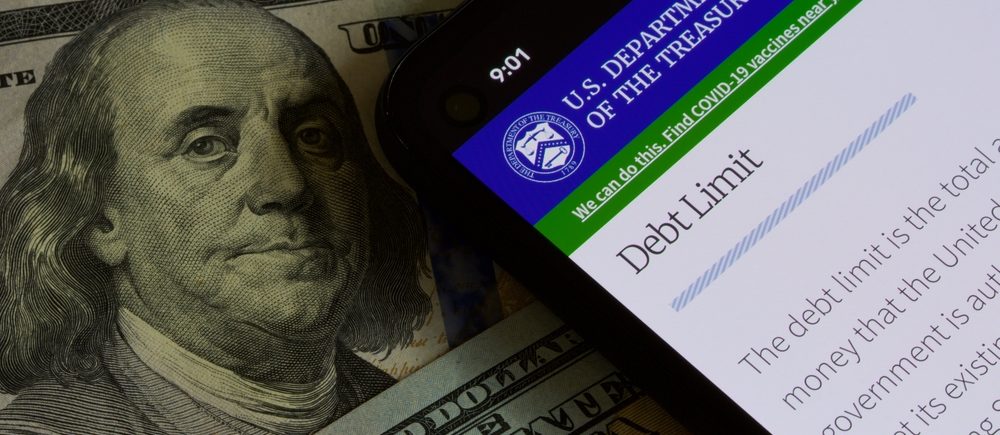The U.S. hit the debt ceiling
The U.S. Debt Ceiling is an essential fiscal tool that has been around for a while; however, it has recently become a source of much debate and discussion.
The debt ceiling is the legal limit to which the U.S. government can borrow money from the public. It has become a significant issue for Congress and the President as the U.S. borrows more money than it can pay back. This article will discuss the history and current state of the U.S. Debt Ceiling and how it impacts the U.S. economy. We will also look at some of the proposed solutions for the debt ceiling and the implications for the U.S. economy.
The U.S. hit the debt ceiling on Thursday, forcing the Treasury Department to take exceptional measures to continue delivering the state’s bills.
Secretary Janet Yellen informed Congress that the Treasury Department has begun to take “extraordinary measures” to keep the United States from breaching the debt ceiling. The statutory cap, currently set at $31.4 trillion, on how much the nation can borrow to pay its bills to “meet its existing legal obligations” approved by past legislation can only be raised by Congress.
What is the debt ceiling?
Established by Congress, the debt ceiling is the maximum amount the federal government can borrow to finance obligations lawmakers and presidents have already approved – since the government runs budget deficits and the revenue it collects is insufficient. Increasing the cap does not authorize new spending commitments.
The debt ceiling, which currently stands at $31.4 trillion, was created more than a century ago and has been modified more than 100 times since World War II.
Where does the debt ceiling stand now?
The debt ceiling is currently in political limbo, with the Biden administration and Republicans in the House of Representatives at an impasse. Republicans have clarified that they will not agree to raise the limit unless the Biden administration agrees to spend cuts. In the meantime, Treasury Secretary Janet Yellen and her team are trying to find ways to keep the debt ceiling from becoming a crisis. This includes suspending new investments in the Civil Service Retirement and Disability Fund and the Postal Service Retiree Health Benefits Fund. In doing so, they aim to keep the debt ceiling from becoming a major issue.
What could happen as the U.S. approaches a default?
As the U.S. approaches a possible default, the risks to the global economy are increasing. The U.S. has never defaulted on its debt, but a default could have serious repercussions in the markets.
If the U.S. defaults, investors would likely face market volatility, including sharp declines in stocks and companies that rely heavily on the government. This could be similar to the 2011 debt ceiling crisis, when the U.S. received a downgrade in its credit rating and stocks sold off sharply.
“It seems to take visceral market volatility to force politicians to the table,” says Ross Mayfield, an investment strategy analyst at Baird Private Wealth Management.
In any case, it’s important to remember that the U.S. will likely take steps to avoid a default, but it’s wise to be prepared for potential market turbulence in the event of a default.
What are extraordinary measures?
Extraordinary measures are behind-the-scenes accounting maneuvers taken by Treasury Secretaries to prevent a default on the federal debt. Congress has authorized Secretaries from both Democratic and Republican administrations to take such measures to give lawmakers more time to increase or suspend the debt limit. For this situation, the Secretary of the Treasury Janet Yellen has proposed selling existing investments and suspending reinvestments of the Civil Service Retirement and Disability Fund and the Postal Service Retiree Health Benefits Fund. Additionally, she is suspending the reinvestment of a government securities fund of the Federal Employees Retirement System Thrift Savings Plan.
These funds are invested in special-issue Treasury securities, which count against the debt limit. Yellen’s actions would reduce the amount of outstanding debt subject to the limit and temporarily provide the agency with additional capacity to continue financing the federal government’s operations.
Will Congress raise the debt ceiling?
Recent events in the House of Representatives have raised uncertainty about whether the newly elected Speaker of the House, Kevin McCarthy, will be able to successfully negotiate a deal between hardline Republicans and Democrats. Republicans have suggested using the debt ceiling crisis as leverage to cut down government spending and balance the US budget, while Democrats have advocated for a clean debt ceiling increase without any conditions attached.
The White House has reiterated that it will not make any concessions on raising the debt ceiling and will not enter into negotiations. To ensure the government can pay its bills, House Republicans are preparing contingency plans that would instruct the Treasury Department to prioritize payments if Congress fails to agree on how to raise the debt ceiling.
The likelihood of Congress raising the debt ceiling is uncertain. However, it is clear that Congress must come to a resolution to ensure the government can pay its bills and prevent a potential default.
How is the debt ceiling crisis different from a federal government shutdown?
The federal government shutdown and the debt ceiling crisis are distinctly different, yet often confused. While a government shutdown occurs when Congress fails to pass a federal funding bill, a debt ceiling crisis is triggered when Congress does not approve legislation to increase the nation’s borrowing limit. Last month, Congress passed a $1.7 trillion federal spending bill, thus averting a potential government shutdown and ensuring federal employees will receive their paychecks. The legislation will ensure government operations continue until the end of the fiscal year on September 30.
 Noor Trends News, Technical Analysis, Educational Tools and Recommendations
Noor Trends News, Technical Analysis, Educational Tools and Recommendations





